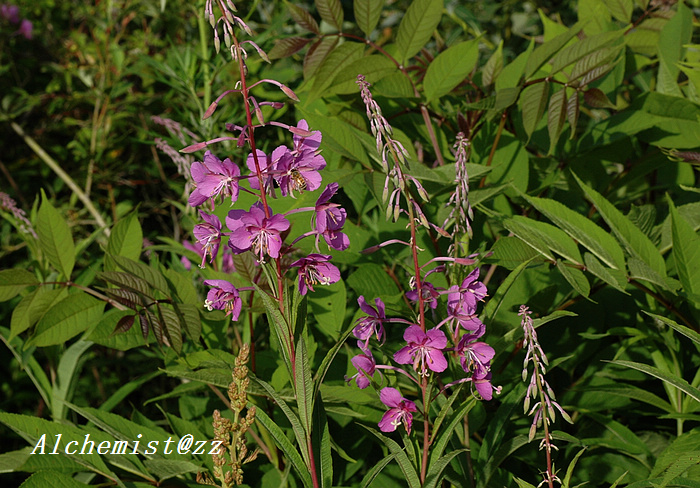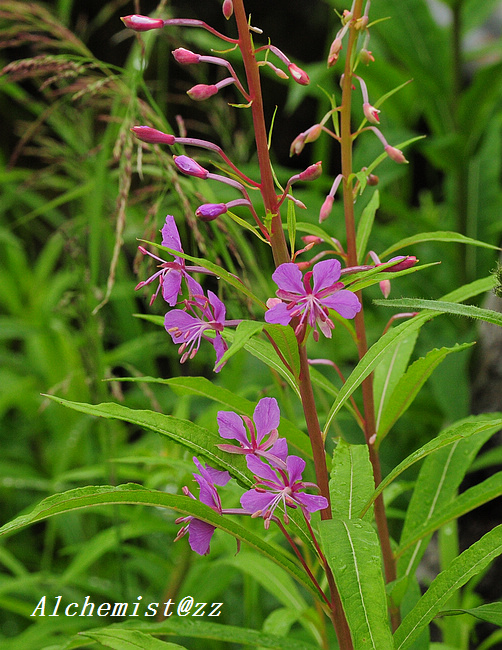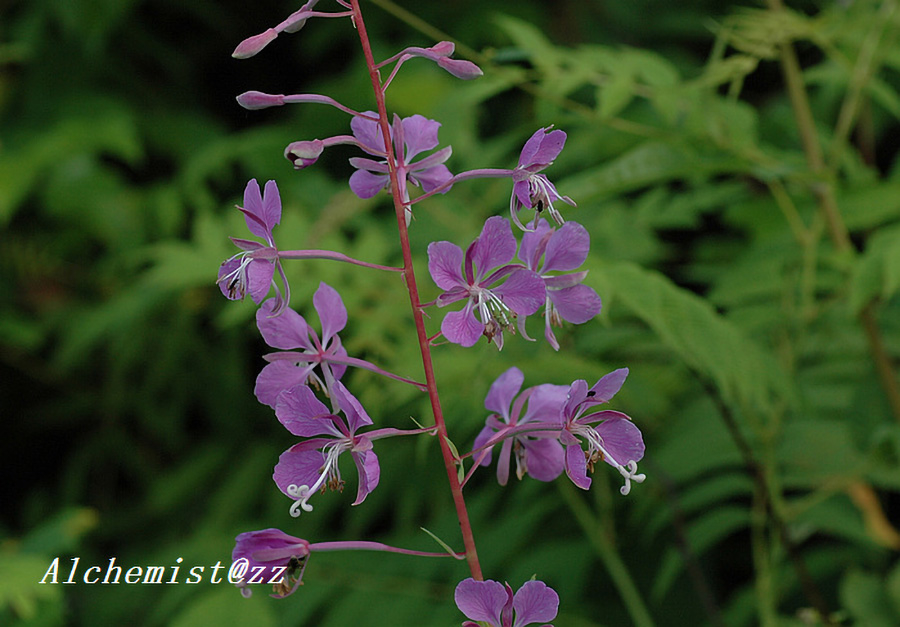柳兰 Epilobium angustifolium
- Scientific Name: Epilobium angustifolium L.
- Ref: Sp. Pl.:347. 1753
- Synonyms: Chamaenerion angustifolium (L.) Scop., Chamerion angustifolium (L.) J. Holub
- English Common Name: rosebay willowherb, fireweed
- Chinese Common Name: 柳兰 liǔlán
- Japanese Common Name: ヤナギラン [柳蘭] yanagiran
- Family: Onagraceae
- Genus: Epilobium
- Distribution: Moist often disturbed places; near sea level to 4700 m. Gansu, Guizhou, Hebei, Heilongjiang, Henan, Hubei, Jiangxi, Jilin, Liaoning, Nei Mongol, Ningxia, Qinghai, Shaanxi, Shandong, Shanxi, Sichuan, Xinjiang, Xizang, Yunnan [Afghanistan, Bhutan, India, Japan, Korea, Mongolia, Myanmar, Nepal, Pakistan, Russia; N Africa, C, N, and SW Asia, Europe, North America].
- Photo: 07/14/2008, Mt. Changbai, Jilin
Herbs perennial, erect, forming large clones by vigorous soboles from a woody caudex or by long lateral roots. Stems 20-200 cm tall, glabrous to densely strigillose especially on inflorescence. Leaves sessile or petioles to 7 mm; basal leaf blade scalelike below ground, lanceolate-oblong to obovate, 0.5-2 cm; cauline blade green, linear to lanceolate, 3-23 × 0.3-3.4 cm, glabrous throughout or abaxially strigillose on midvein, lateral veins 10-25 per side, confluent to submarginal vein, base obtuse or cuneate to attenuate, margin entire or scarcely denticulate, apex attenuate-acute. Bracts much smaller than cauline leaves. Inflorescence glabrous or strigillose. Flowers nodding in bud, suberect at anthesis. Sepals 6-19 × 1.5-3 mm. Petals pale pink to purple or rarely white, 9-25 × 3-15 mm. Ovary 0.6-2.5 cm, densely canescent; style 8-16 mm, lower part villous. Capsules 4-9.5 cm, densely appressed-canescent; pedicels 0.5-3 cm. Seeds 0.9-1.3 × 0.3-0.45 mm, irregularly reticulate, with indistinct chalazal collar; coma dingy or white, 1-1.7 cm, not easily detaching. (Flora of China)

07/14/2008, Mt. Changbai, Jilin

07/14/2008, Mt. Changbai, Jilin
